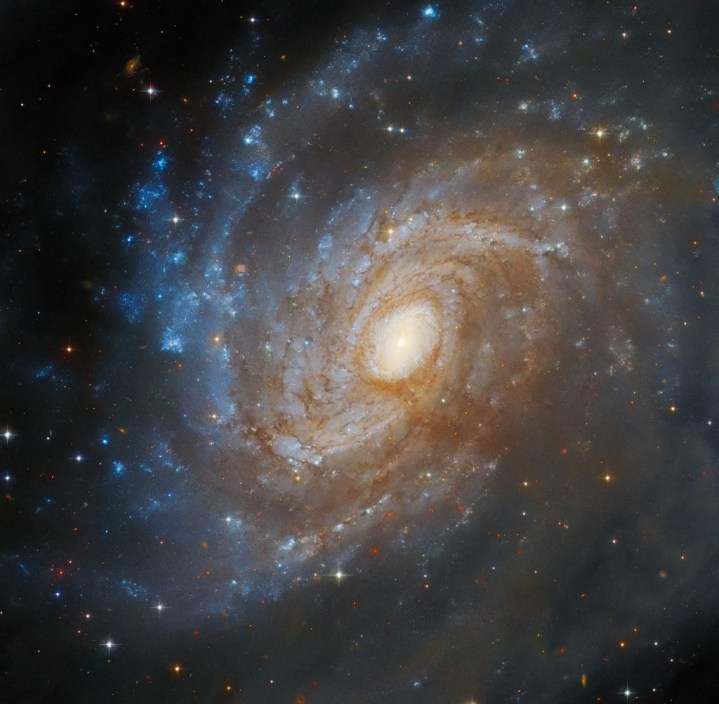
A new image from the Hubble Space Telescope shows a galaxy partly hidden by a huge cloud of dust known as a dark nebula. The galaxy IC 4633 still shines brightly and beautifully in the main part of the image, but to the bottom right, you can see dark smudges of dust that are blocking the light from this part of the galaxy.
Taken using Hubble’s Advanced Camera for Surveys (ACS) instrument, the image also incorporates data from the DECam instrument on the Víctor M. Blanco 4-meter Telescope, which is located in Chile. By bringing together data from the space-based Hubble and the ground-based DECam, astronomers can get a better look at this galaxy, located 100 million light-years away, and the dark dust partially obscuring it.

This is a bustling, busy galaxy, with vigorous star formation and a bright center called an active galactic nucleus. Thanks to its orientation relative to Earth, we can see the elegant spiral shape. Spiral galaxies tend to be symmetrical, so you can tell that the bottom right part of the galaxy is being obscured by something as it is so much less bright with stars than other parts.
The cloud of dust blocking the view is part of a star-forming region called Chamaeleon, and it is much closer to us than the galaxy it blocks. At just 500 light-years away, the dark nebula is much closer to Earth than the galaxy.
When seen in the visible light portion of the spectrum, the same wavelengths seen by the human eye and also known as the optical, these clouds of dust appear dark and featureless. Indeed, for many years, astronomers regarded such cosmic dust as nothing but an annoyance that got in the way of their observations. But in recent years, the importance of cosmic dust has become apparent, as it plays a key role in processes like star formation.
Dust becomes even more interesting when it is viewed in the infrared wavelength, with instruments like those used on the James Webb Space Telescope. Instruments operating in the infrared can peer through layers of dust to see structures that would otherwise be hidden, such as concentric dust shells around stars or the swirls of dust in nearby galaxies.
Editors’ Recommendations






